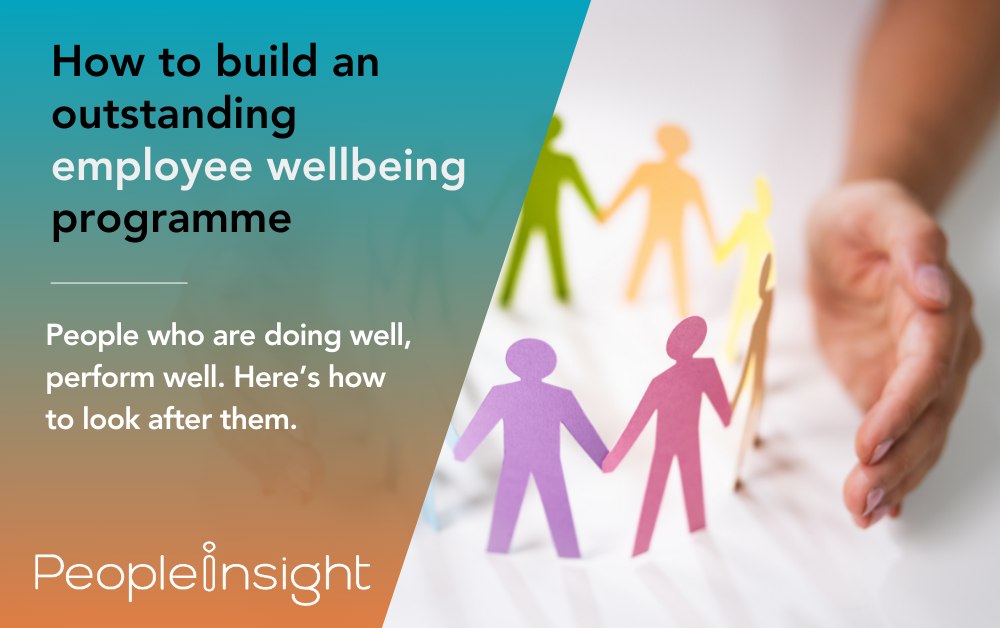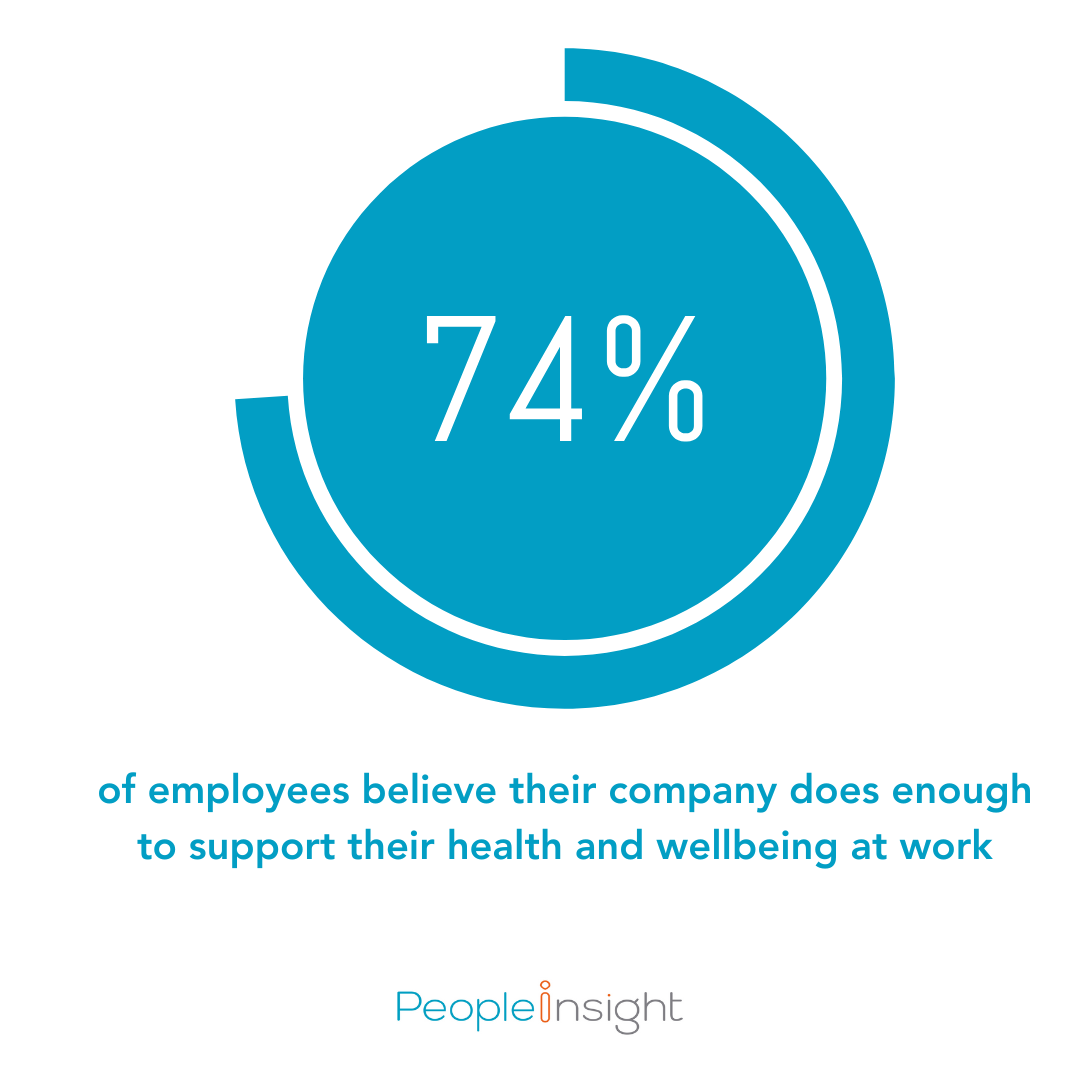
When you hear the term ‘employee wellbeing programme’, your mind might fill of concepts such as free gym memberships, complimentary coffee or therapy sessions. The reality, though, is far more complex. An effective programme is more about actively developing a holistic strategy that addresses the multiple aspects of employee health and wellbeing — mental, emotional, physical, financial and social. A well-constructed employee wellbeing programme can lead to improved employee health, better engagement and even increased productivity. A high performing workforce is directly linked to the quality of wellbeing initiatives that are implemented. Such a programme can also play a key role in attracting and retaining top talent in an increasingly competitive job market.
A successful employee wellbeing programme is rooted in understanding what employees truly need to thrive both at work and in their personal lives. Companies that make the effort to develop and implement these programmes find that it leads to lower absenteeism, greater fulfilment in their roles and a more positive workplace culture.
Currently, our benchmark data shows that 74% of employees believe their company does enough to support their health and wellbeing at work. While this is certainly a promising statistic, there is definitely more work that could, and should, be done. This is where a new and improved programme comes in.

But understanding the importance of these programmes is one thing — how can you actually put measures in place to create one that will reap the rewards you’re looking for?
Related: The ultimate employee wellbeing guide 2025
When designing an employee wellbeing programme, several factors need to be carefully considered to make it truly effective. Here are some key areas to focus on:
The first step is to understand the unique needs of your employees. Conducting regular employee wellbeing surveys can give insight into areas that require support, be it mental health, work-life balance or physical health. The survey results will allow you to prioritise initiatives that are most relevant to your people.
Related: 31% of employees report unfair treatment at work
As with most initiatives, one of your first steps should be to define what success looks like. What metrics matter to you? Are you aiming to reduce absenteeism? Boost employee engagement? Foster a healthier work environment? Setting measurable goals will help you track the success of your programme over time and make adjustments where necessary.
An outstanding employee wellbeing programme should cover multiple dimensions of wellbeing, including:
No employee wellbeing programme can be successful without leadership buy-in and support. Senior management should champion the programme, providing the necessary resources and support to ensure its success. It’s also important to train line managers to recognise the signs of stress, burnout or mental health struggles in employees. Line managers play an essential role in creating supportive working environments that prioritise employee wellbeing.
An effective wellbeing programme should be inclusive, taking into account the diverse needs of your workforce. This means offering flexible working arrangements, recognising different cultural practices and making sure that all wellbeing initiatives are accessible to everyone. For example, you might provide resources in multiple languages, ensure your programme is sensitive to cultural differences and make initiatives available to remote workers. A culture that values personal growth and inclusivity will create a stronger sense of community among employees.
Clear communication is the key to the success of any wellbeing programme. Employees need to be fully informed about the available resources and how to access them. Create a centralised platform, whether it’s an intranet page or a dedicated wellbeing section on your company’s app, where employees can easily find information about the programme. Employees should also be regularly reminded about the benefits available to them and encouraged to take full advantage of the offerings.
The wellbeing programme should reflect your organisational values and culture. For instance, if your company values flexibility, you could incorporate more remote working options or flexible hours into your wellbeing programme. If your company has a high focus on innovation, integrating digital tools to support employee health and wellbeing (like a mental health app or an online fitness platform) may be the answer.
Unsurprisingly, an employee wellbeing programme will only succeed if employees actually engage with it. Make participation easy and encourage involvement through incentives, regular reminders or challenges. For example, create wellness challenges that allow employees to track their physical activity, mental health practices or dietary habits over a period of time, offering rewards for milestones. Engagement with these initiatives will have a direct impact on improving both individual health and overall employee wellbeing.
An ongoing evaluation process is essential to understanding how effective your programme is. Use employee surveys and feedback tools (such as our own employee experience platform) to gather input from employees about their experiences and the impact of the programme on their wellbeing. Consider using a staff wellbeing survey to measure factors like employee stress levels, satisfaction with the wellbeing initiatives and areas for improvement. Regularly review the data to ensure that your programme continues to meet employee needs and adjust it accordingly.
The best employee wellbeing programmes are dynamic and evolve over time. As the workforce, business goals and societal factors change, so should your programme. Regularly update your offerings based on employee feedback and new developments in the field of employee health and wellbeing. This might mean introducing new health benefits, bringing in new mental health initiatives or updating your digital tools to keep pace with the latest wellbeing trends.
Wellbeing shouldn’t be seen as a standalone programme or an HR initiative; it should be ingrained in the company’s ethos. Employees need to see that supporting wellbeing is a top priority at every level of the organisation. Encourage management to lead by example by prioritising their own wellbeing and openly participating in wellness activities. This helps normalise the importance of wellbeing and signals to employees that they can do the same.
While creating an outstanding wellbeing programme is important, it’s also essential to be mindful of your budget. Wellbeing initiatives don’t always need to come with a high price tag. Many valuable initiatives — such as flexible working, mindfulness sessions or peer support programmes — can be implemented with minimal financial investment. Invest strategically in areas that will have the greatest impact on employee wellbeing, keeping in mind the long-term benefits.
The effectiveness of an employee wellbeing programme can be difficult to gauge without regular measurement. This is where employee wellbeing surveys come in. A wellbeing survey allows employers to collect feedback directly from employees, highlighting areas of strength and identifying areas where the programme can be improved.
By regularly conducting staff wellbeing surveys, companies can track employee satisfaction with the wellbeing initiatives on offer and make necessary adjustments. This ensures that the employee wellbeing programme evolves in line with the needs of the workforce, ensuring high quality outcomes for both employees and employers.
Investing in an employee wellbeing programme is a long-term strategy that benefits both employees and employers. High performing employees who feel cared for in terms of their health, work-life balance and overall wellbeing are more likely to be engaged, productive and loyal.
If you’re looking to measure the success of your current employee wellbeing programme or are considering implementing one, a staff wellbeing survey can help. Get in touch with us today to discover how a staff wellbeing survey can provide valuable insights into the health of your workforce and help you create a programme that truly supports your employees.
